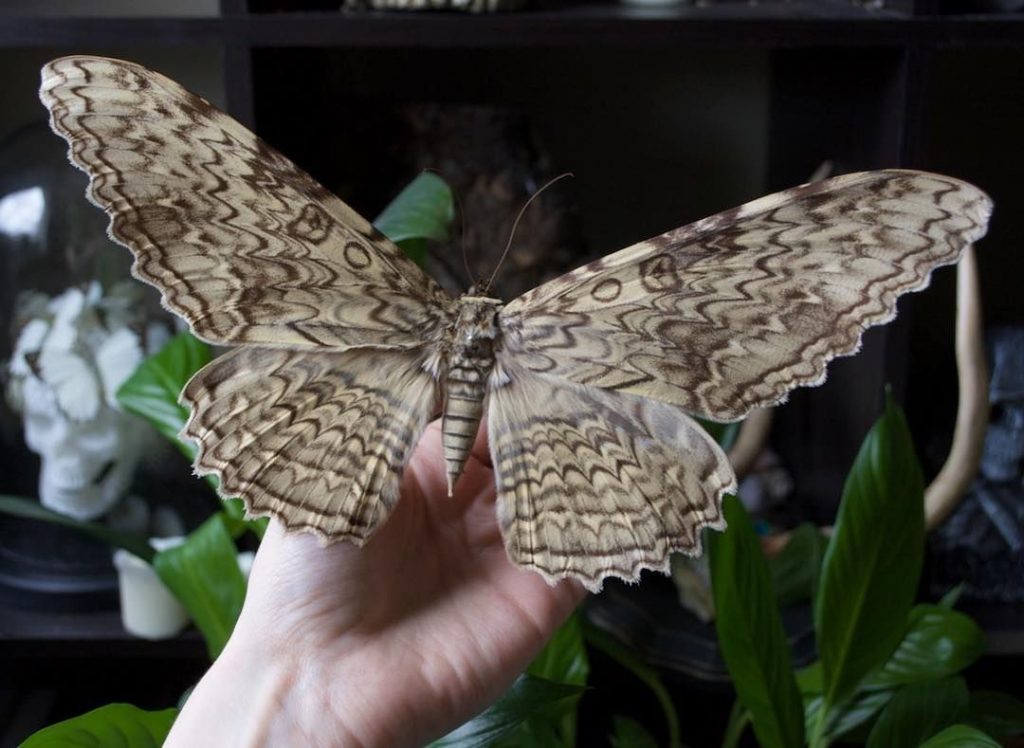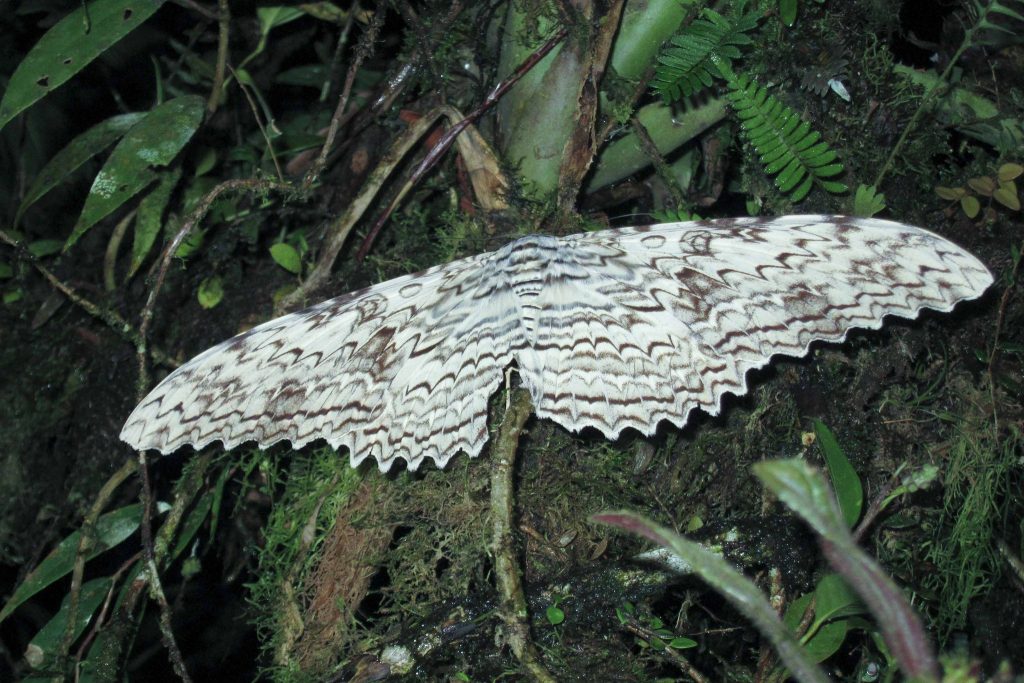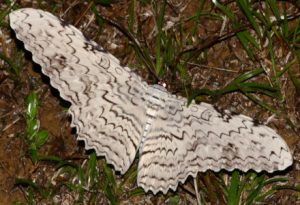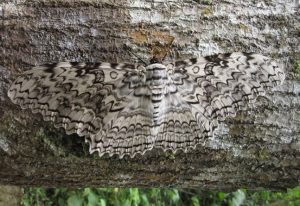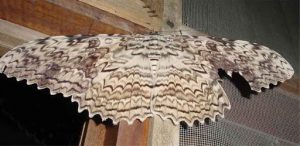White Witch Moth (Thysania agrippina)
White witch moth of the Erebidae family was described for the first time in 1776 by a Dutch merchant named Peter Cramer. It has a wide and extensive range from South America’s Uruguay up to Mexico, extending to North America, up to Texas. The white witch moth gives tough competition to several other moths when it comes to size because of its large wingspan, though the Hercules moth and Atlas moth has surpassed it.
i.pinimg.com
Scientific Classification
- Family: Erebidae
- Genus: Thysania
- Scientific Name: Thysania agrippina
Description and Identification
Caterpillar
The larva has a yellow head, and a dark green segmented body, with a black band separating each segment. They even have tufts of hair on their back, alongside a single horn on the last segment. They feed on their host plants’ leaves and turn bright red right before entering the pupal phase.
Pupa
The pupa remains enclosed within the silken cocoon, and this stage lasts for three to four weeks.
Adult Moth
Sexual Dimorphism: Not prominent
Color and Appearance: When the wings are opened, their color varies from creamy white to light brown, with black and brown lines running across in a zig-zag pattern. The undersides have a violet-black coloration with white spots and markings. When the wings are closed, the color mostly remains the same, but the lines and spots are not too prominent.
Their abdomen is white, bordered in black, with pockets at the back.
Average Wingspan: 30 cm
Flight Pattern: Erratic
Season: Not recorded
Eggs
The small-sized eggs are yellow, mostly remaining in clusters.
Quick Facts
| Other Names | Great owlet moth, great gray witch, ghost moth |
| Distribution | Parts of South America including Uruguay, Brazil, and Mexico, as well as parts of North America up to Texas |
| Habitat | Rainforest region |
| Predators | Bats |
| Lifespan of Adults | Not recorded |
| Host Plants | Legume pea and other members of the woody legume family |
| Adult Diet | Not recorded |
Did You Know
- Their brownish-white coloration resembles the trees’ barks where they inhabit, helping them camouflage against predators.
- They were often targeted by naturalists who used shotguns to get them down. However, these small-bodied moths with large wings sailed gracefully like an invincible witch, and bringing them down was indeed a mammoth task. This resulted in their name.
- German naturalist and illustrator Maria Sibylla Merian has depicted this unique moth in her paintings.
- Besides this species, T. Zenobia, T. pomponia are also described as white witch moth.
Scientific Classification
- Family: Erebidae
- Genus: Thysania
- Scientific Name: Thysania agrippina

